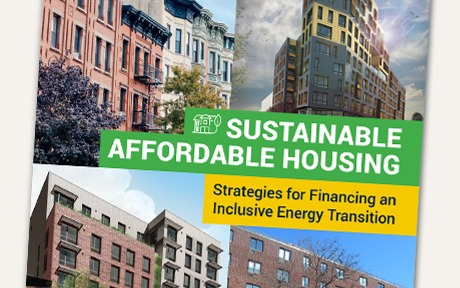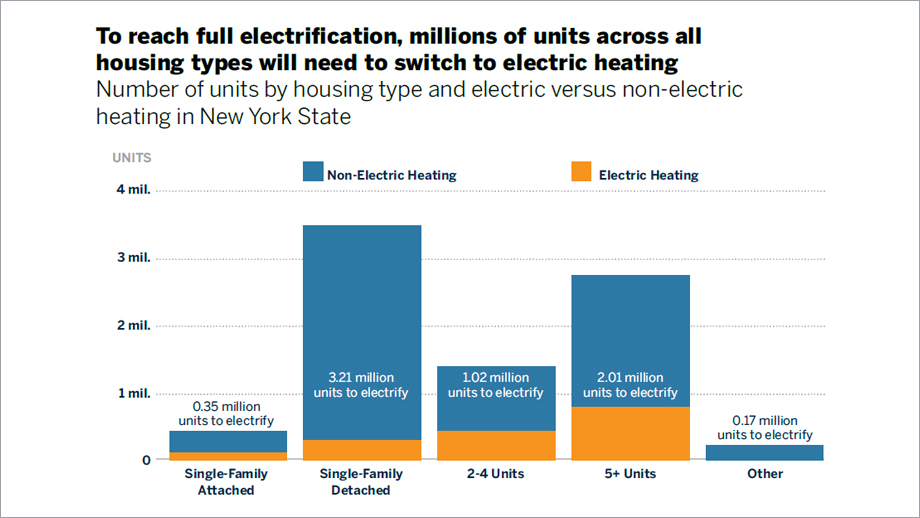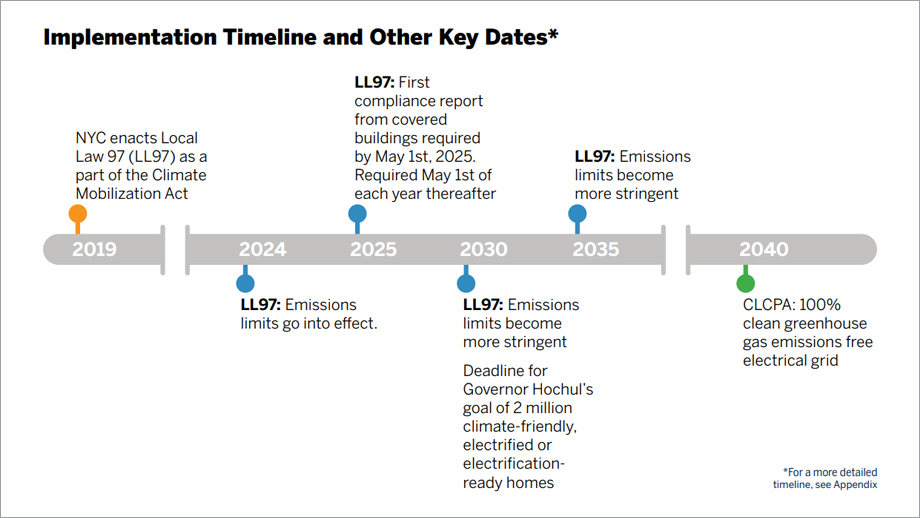
New laws in New York State and New York City require buildings to increase their energy efficiency and sharply reduce their greenhouse gas emissions. "Sustainable Affordable Housing: Strategies for Financing an Inclusive Energy Transition,"recommends policy and business changes to expand the private funding available for affordable housing to upgrade heating and cooling systems and move to building-wide electrification. Proposals in the paper include property tax abatements for electrified buildings and longer amortization for loans used to decarbonize buildings.
Existing buildings directly account for 33 percent of greenhouse gas emissions statewide and about 60 percent in the state's cities.
To comply with New York's laws, an estimated 6.8 million households in the state will need to transition to electric heating or low-carbon fuels, according to the white paper. Of the total households that will need to electrify, an estimated one million are low- and moderate-income households in buildings with five or more units. The majority of that housing is in New York City and is subject to Local Law 97.

New York State’s Climate Action Council estimates that annual investments in energy upgrades statewide will grow from roughly $5 billion in 2030 to $30 billion in 2050. Complying with New York City’s Local Law 97, which lays out a series of deadlines beginning on January 1, 2024, will require expensive upgrades. Failing to comply puts building owners at risk of substantial penalties.
The authors of the white paper find that while market-rate properties should be able to finance upgrades through additional debt or rent increases, owners of affordable housing may find compliance hard to finance, given rent restrictions on affordable properties. The white paper argues that identifying paths to finance upgrades to affordable housing is a central issue in meeting New York State’s and New York City’s climate goals, since nearly half of New York State’s residents are low- or moderate-income.
The white paper's recommendations include:
- Giving tax incentives for early adopters to low-emissions heating and cooling systems
- Providing tax relief to utility companies to induce them to reduce electricity rates to decarbonized buildings
- Simplifying and aligning existing tax incentive programs to help owners finance retrofits to building systems
- Recognizing the increased future value of carbon-neutral buildings in appraisals
- Creating mortgage products that address decarbonization
- Charging lower interest rates for loans used to upgrade building systems to meet climate goals

The New York Fed held a series of roundtables, over the summer, in partnership with the New York State Energy Research and Development Authority and the Community Preservation Corporation. The discussions aimed to help housing developers and lenders understand climate adaptation risks to their collateral portfolios and to identify public and private public financing options for decarbonizing New York’s affordable housing. The white paper is a result of those discussions. It was developed as part of the New York Fed's Community Development efforts, which have three areas of focus: health, household financial well-being, and climate risk.










